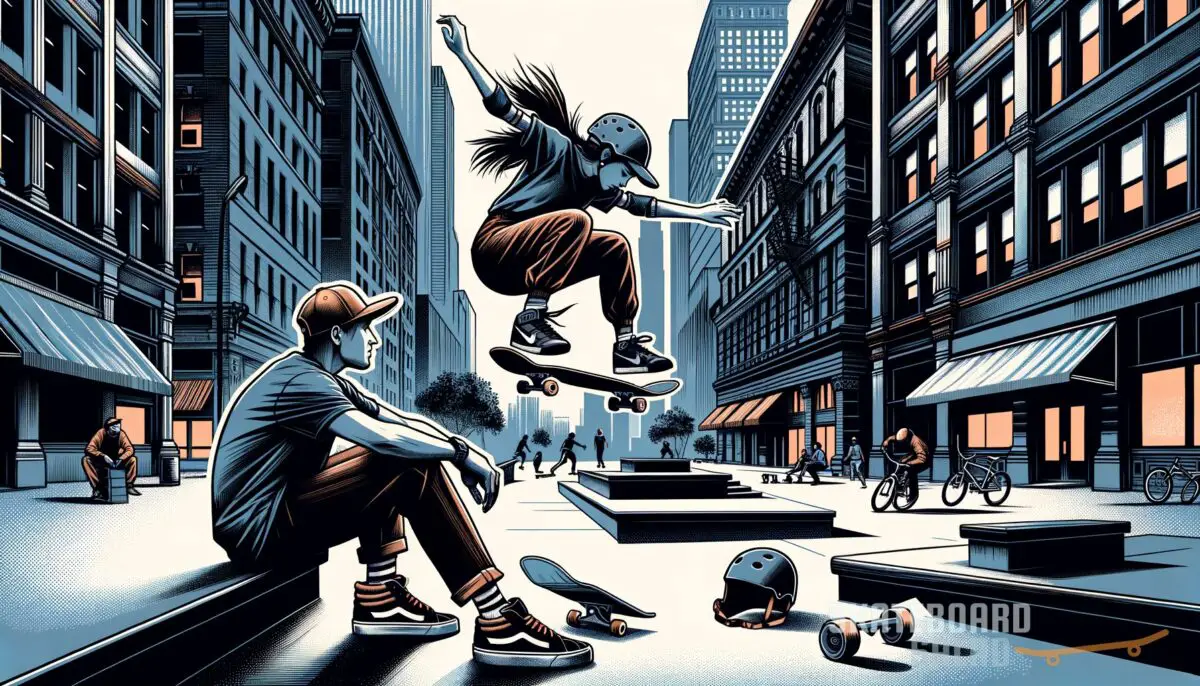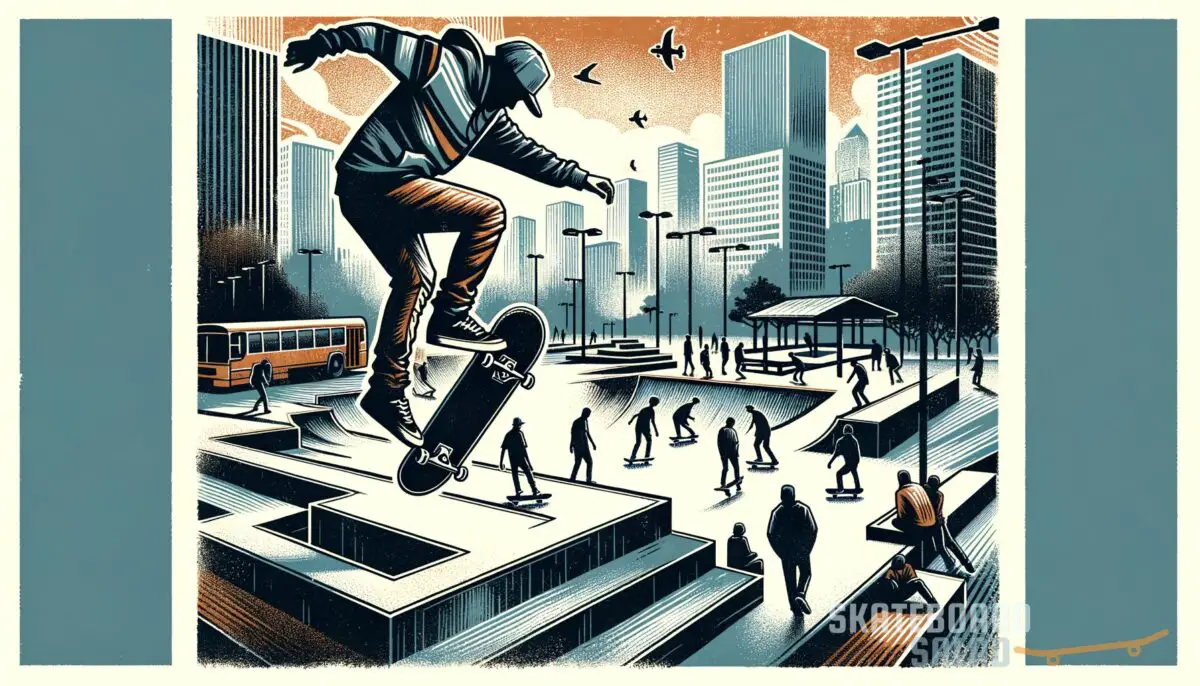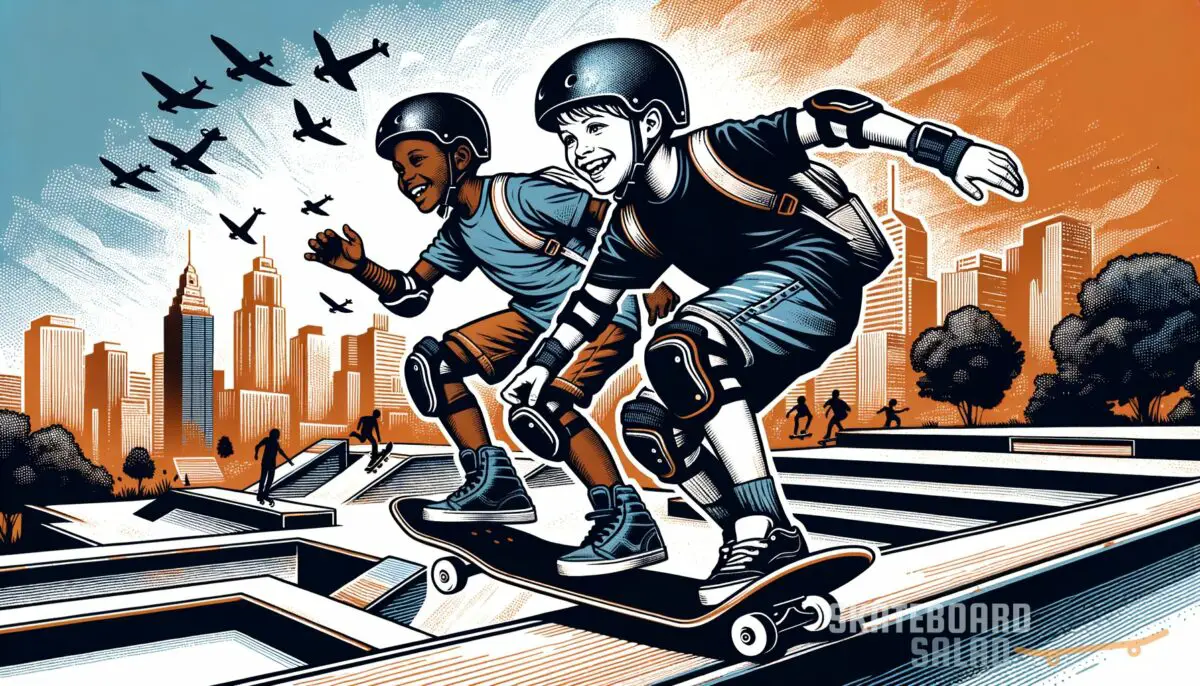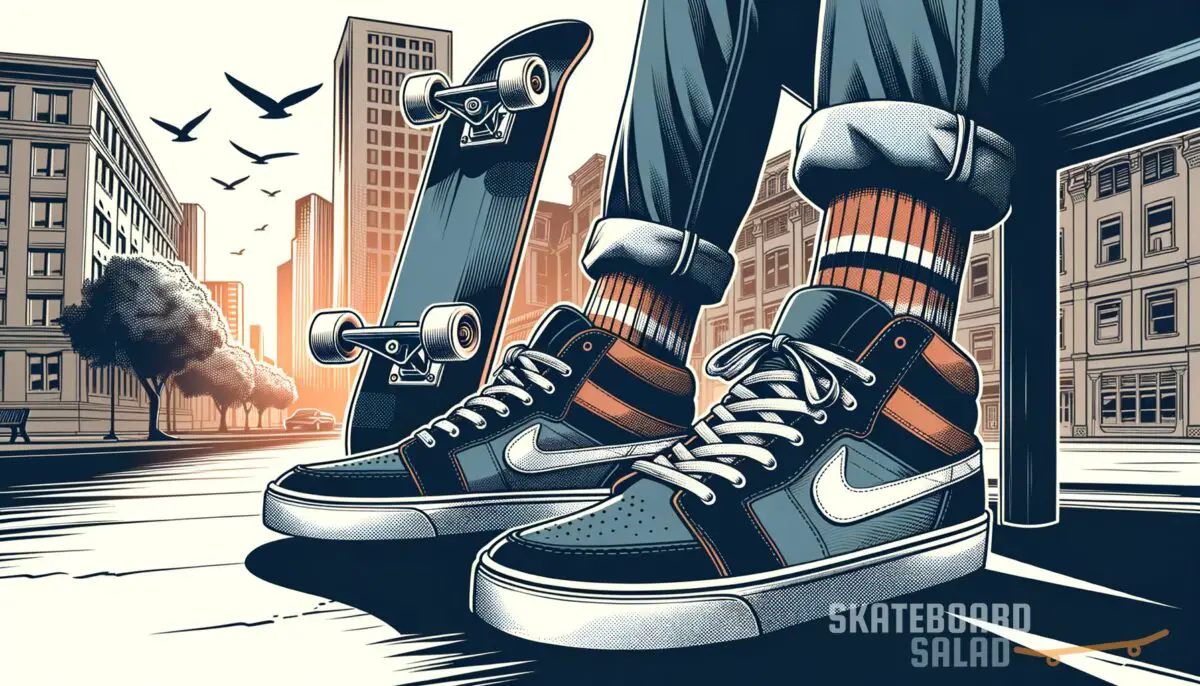Ever wondered if pushing wood is tough on the bones or just another urban myth? People on the streets usually get heated over this, with some swearing that killer tricks come at a price. It’s about knowing chops, from the slickest street decks to the gnarliest pop.
Is skateboarding a wrecking ball for your body? We’ll dive into the impact of street shredding on your physique, and trust me, it’s not all glaring doom.
Key takeaways
- Wearing protective gear is essential to prevent injuries.
- Skate within your skill level and progress gradually with tricks.
- Maintain your skateboard to ensure a smooth ride and prolong its life.
- Respect your body’s limits; rest and recovery are key.
Is skateboarding bad for your body?
Skateboarding, like any physical activity, presents its risks and benefits. Here’s the deal, skateboarding isn’t inherently bad for your body, but the way you skate can determine a lot. Consistent impacts and falls can lead to injuries, but that’s part of the grind, right?
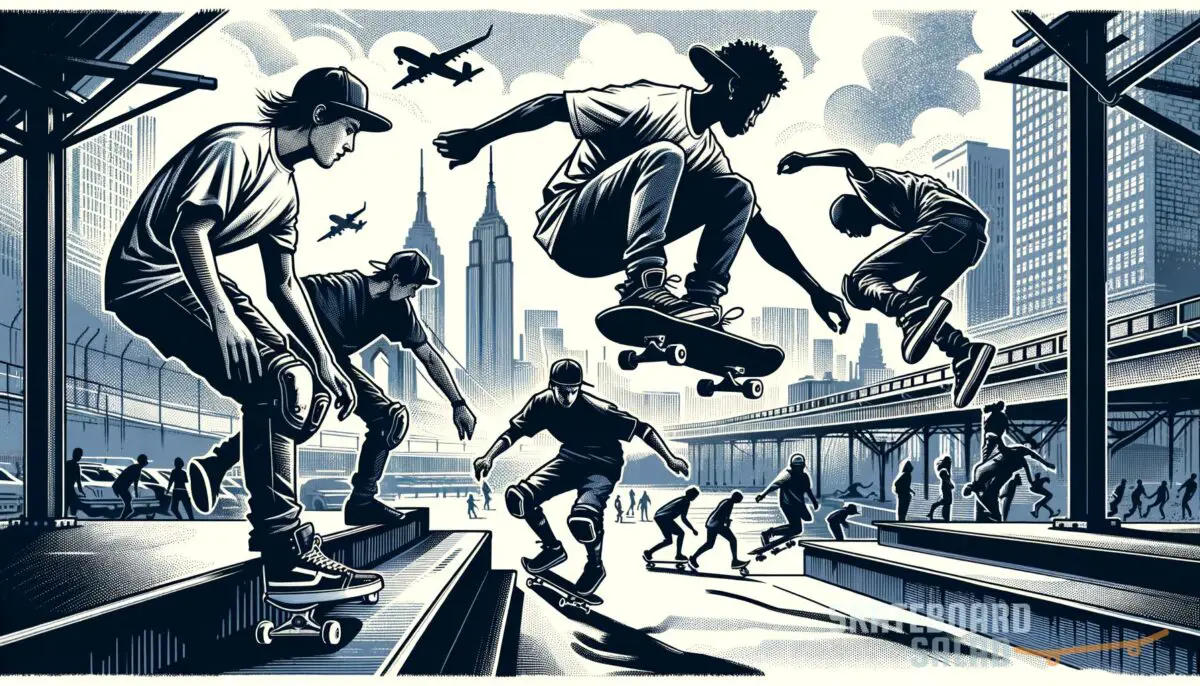
It’s all about taking precautions and knowing your limits. Most skaters will tell you the payoff of nailing that kickflip is well worth it. Still, understanding your body’s response to shredding the streets can make all the difference in the long haul.
- Benefits of Skateboarding:
- Enhances coordination, balance, and flexibility
- Serves as a full-body workout – hello core strength!
- Boosts endurance and cardiovascular health
- Risks Involved with Skateboarding:
- Chance of acute injuries: sprains, fractures, and scrapes
- Long-term issues: joint pain, particularly in knees and ankles
- Repetitive stress might trouble tendons and ligaments over time
Incorporate proper warm-ups, stretch sessions, and wear protective gear to minimize risks. Brush up on the common skateboarding injuries and how to dodge them. It’s crucial to listen to your body and take those rest days seriously to keep your skating sustainably gnar.
Yo, speaking just as another skater cruising and bruising through NYC, I think it’s a trade-off. You put in the sweat and occasionally eat concrete, but that’s the flavor of the streets. Skating has turned my legs into steel springs, and the adrenaline rush is unbeatable.
But yeah, I’ve picked up a few battle scars along the way.
Wearing a helmet can save your noggin from serious injuries.Every time you step on that board, think safety first. Skateboarding’s an adventure, but a smart skater is the one who skates again tomorrow.
Remember that scene from “Lords of Dogtown” where the dudes take the spills but keep coming back for more? It captures the essence, man. We might bail hard, but the thrill of the ride calls us back.
Skateboarding can be tough on the body, no doubt, but the scene, the style, and the stoke are totally worth it. Check out the lowdown on the most durable skate shoes to give your feet some extra love.
Enjoi Whitey Panda Complete Skateboard

Enjoi Whitey Panda Complete Skateboard
Preventing injuries while skateboarding
Protecting yourself from injuries is crucial to keeping the shred alive. Arm yourself with the know-how to skate safer. It’s simple; gear up with helmets, knee pads, and elbow pads, especially when you’re pulling off insane tricks or tackling vert ramps.
Consider investing in a skate tool to keep your board in top shape.
Common protective gear and its importance
- Wearing a helmet can save your noggin from serious injuries.
- Knee and elbow pads cushion your joints during a fall.
Take extra care when riding on uneven surfaces. Remember to check out the necessity of a skate tool for maintenance.
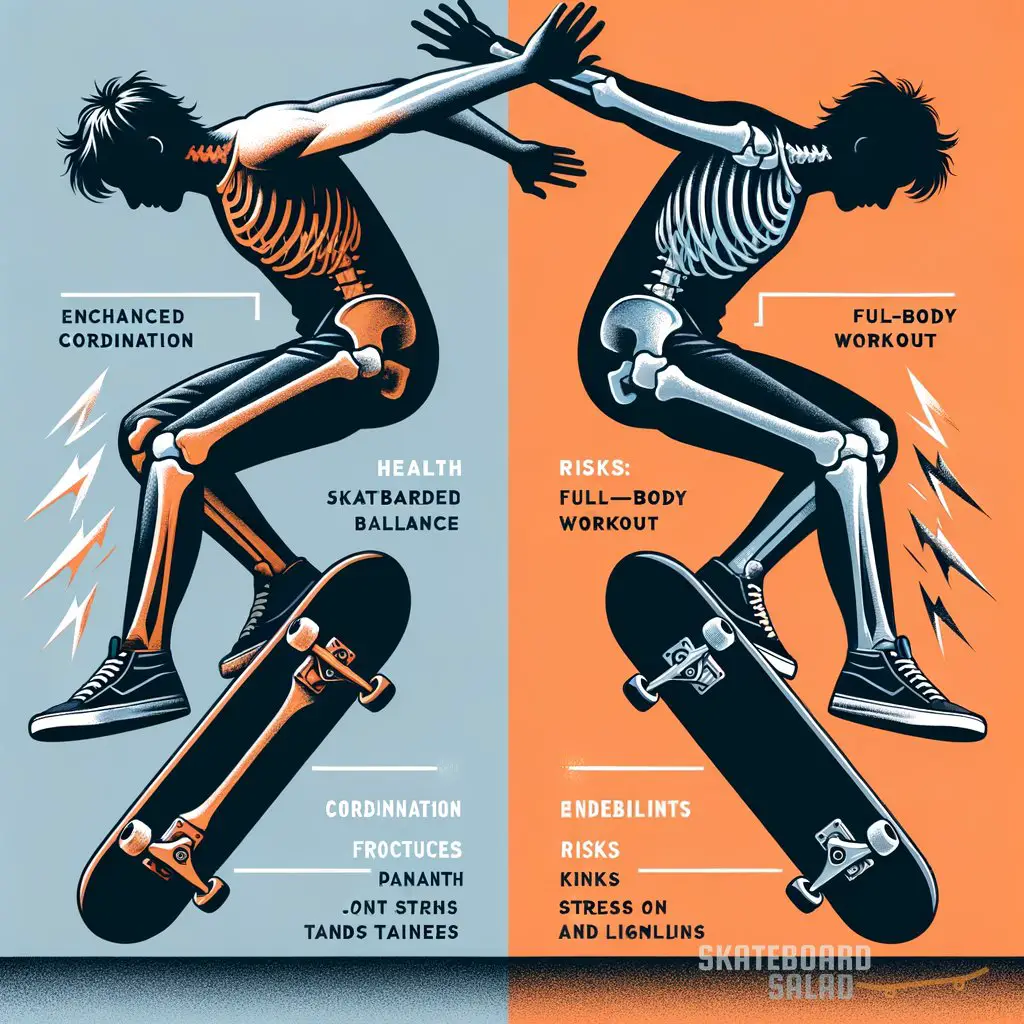
Learn tricks progressively
Biting off more than you can chew trick-wise is a one-way ticket to Slam City. Start with the basics and progress to more advanced moves. Not only does this build your skill set, but it also keeps you within your physical limits.
- Master the fundamentals before the flashy flips to avoid unnecessary wipeouts.
- Gradual progression through tricks can minimize the strain on your body.
Here’s a guide to the first skateboard tricks to learn safely.
Skateboarding and long-term health
The long-term impact of skateboarding on your body can be significant. Prolonged skating puts repetitive strain on certain body parts, which can lead to chronic issues.
Understanding repetitive strain and joint health
- Continuous skating takes a toll on knees and ankles over time.
- Stick to a routine that balances skate time with rest and recovery.

How to maintain good physical health
Keep your body prepped for the session and the sessions to come.
- Stay hydrated and maintain a balanced diet.
- Engage in cross-training to strengthen the body overall.
For more tips, browse through the information on common skateboarding injuries and how to prevent them.
Skateboarding isn’t inherently detrimental to your health. With preventative measures and a progressive approach to learning tricks, the physical impact can be mitigated. Take the necessary steps to protect yourself and ensure a long, fruitful relationship with your board.
| Protective Gear | Potential Injury Prevented | Suggested for | |—|—|—| | Helmet | Head trauma | Every skate session | | Knee Pads | Knee injuries | Learning new tricks, vert skating | | Wrist Guards | Wrist fractures | Street and transition skating |
Before you pop an ollie, it’s essential to know the kind of beatings you might spare yourself by being geared up correctly. The table above gives you a quick rundown on some essential skate gear and the type of injuries they’re known for preventing. Helmets are non-negotiable, while other pads might depend on your skating style and the complexity of tricks you’re attempting.
When you’re setting off to shred the streets, remember that a bit of wisdom can make the difference between a sick session and a trip to the ER. Here’s a quick rundown of skateboarding dos and don’ts to help you keep it real and stay out of trouble.
| Do | Don’t |
|---|---|
| Wear protective gear | Ignore pain or discomfort |
| Keep your skateboard well-maintained | Skate in prohibited or unsafe areas |
| Stay within your skill level | Neglect stretching or warming up |
| Learn to fall properly | Rush learning new tricks |
More skateboarding tips
Skateboarding’s about pushing boundaries, but knowing a few tricks off the board can be just as crucial as nailing those on it. These tips aim to keep you rolling smoothly and safely.
- Keep your hardware tight, but not too tight – adjust your trucks to carve comfortably.
- Experiment with different skateboarding wheels to find ones that suit your style and the terrain.
- When you bail, try to roll out of it to distribute the impact – learn the art of the tuck and roll.
- Keep your eyes on the environment; watch for pebbles, cracks, and yes, even those pesky scooters.
- Stay relaxed. Stiffness is a recipe for harsher slams.
- Skate with buddies when you can – it’s safer and way more fun. Plus, they can film your victories and fails.
- Keep things fresh; skate different spots to challenge your skills and adaptability.
- Respect the locals and the skatepark etiquette when you drop in on new territory.
Remember to maintain that board with the best tools and parts. Have a look at the guide on how to maintain your skateboard for peak performance.
If you are a visual learner, check out this video titled ‘Father hopes skateboard crash warns others’
Frequently asked questions (FAQ)
How does skateboarding affect mental health?
Skateboarding can have a positive influence on mental health by reducing stress and providing a creative outlet. It fosters a sense of community and accomplishment, which can boost self-esteem and overall well-being.
Can skateboarding improve other areas of my physical fitness?
Absolutely, it’s a fantastic cardio workout that also builds lower body strength and core stability. Skating also sharpens your reflexes and improves overall body coordination, which can be beneficial for other sports and activities.
Is there an ideal age to start skateboarding?
There’s no perfect age to start skateboarding; it’s more about attitude and willingness to learn. While young skaters may pick up the skills quicker, older beginners can also excel with dedication and practice. Remember, it’s crucial to skate within your ability and comfort level.
Final thoughts
So there you have it, a board’s-eye view on whether skateboarding’s bad for your body. Like any sport, it’s all about playing it smart and listening to your body. Protect yourself, progress at your own pace, and keep your skate gear in check.
With the right approach, skateboarding can be a fulfilling, lifelong passion that keeps your body and mind sharp. Hit the pavement, embrace the culture, and enjoy the ride—it’s all part of the skateboarding saga.
What’s your experience with skateboarding and your body’s response? Did I cover everything you wanted to know? Let me know in the comments section below; _I read and reply to every comment



